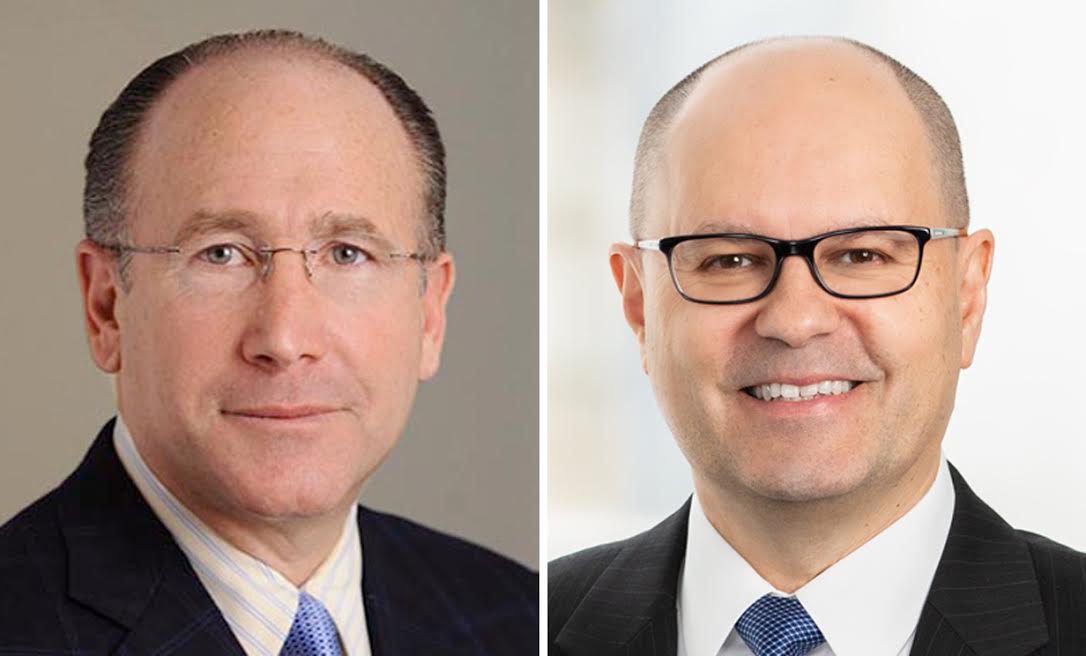'Sutton 58 v. Pilevsky': It's Not All Bad News
In their Real Estate Financing column, Jeffrey Steiner and Dino Fazlibegu discuss the recent First Department Appellate Division decision Sutton 58 Associations LLC v. Philip Pilevsky, which “engendered a good deal of alarm in the New York commercial real estate lending community as more than a few worried that the decision would deprive lenders of the protections afforded to them by having special purpose bankruptcy remote and single asset borrowers.”
May 14, 2019 at 01:00 PM
8 minute read
 Jeffrey B. Steiner and Dino Fazlibegu
Jeffrey B. Steiner and Dino Fazlibegu
An important component of commercial real estate mortgage lending is the requirement that a borrower be, and remain, structured as a special purpose bankruptcy remote entity, which requires, among other things, that the borrower only own the property being mortgaged to the lender. Lenders have required borrowers to implement such structures in order to reduce the likelihood that their borrowers would be put into bankruptcy as a result of the bankruptcy of the borrower's affiliates.
Although being a special purpose bankruptcy remote entity will not prohibit a borrower itself from filing for bankruptcy, the requirement that a borrower own only a single asset (i.e., the mortgaged property) could result in the borrower being a single asset real estate debtor under bankruptcy law,[1] which may enable the lender to have an expedited process for having the automatic stay lifted. [2]
Furthermore, lenders protect themselves by including in their loan documents provisions to the effect that failure of the borrower to maintain its status as a special purposes bankruptcy remote entity or the filing of bankruptcy by the borrower will trigger an event of default of the loan and, typically, cause the guarantor of the loan to be liable to the lender for the full amount of the debt.
A recent decision by the Appellate Division, First Apartment—Sutton 58 Associations v. Philip Pilevsky, et al. (2019 NY Slip Op 00210, decided on Jan. 10, 2019)—however, engendered a good deal of alarm in the New York commercial real estate lending community as more than a few worried that the decision would deprive lenders of the protections afforded to them by having special purpose bankruptcy remote and single asset borrowers.
'Sutton 58' Background
The plaintiff lender in Sutton 58 is a lender that made secured loans to a developer constructing a tower consisting of primarily luxury residential apartments at Sutton Place and 58th Street in New York City. The loans consisted of senior and subordinate financing totaling an aggregate of $147.25 million. The senior loan was secured by a mortgage on the property while the subordinate loan was secured by a pledge of equity interests in the property owner. The borrower under each loan defaulted by not repaying its respective loan at maturity. As the lender commenced exercising its remedies, one of the defendants, the lender alleged, caused another of the defendants to loan $50,000 to the subordinate borrower, which loan was used to retain an attorney to prepare a bankruptcy petition for the subordinate borrower.
The subordinate borrower, in fact, filed for bankruptcy the day before foreclosure of the subordinate loan was to have occurred. The lender alleged that this loan caused the subordinate borrower to breach certain covenants set forth in the loan document including covenants not to file bankruptcy, not to incur non-permitted indebtedness and to remain a special purpose bankruptcy remote entity. The lender additionally alleged that two of the defendants caused one of the defendants to transfer three rental apartments in Lynbrook, New York, to the senior borrower and to pay senior borrower $150,000. In consideration of the apartments and such funds, the applicable defendant obtained a 49 percent equity interest in the senior borrower.
The lender further alleged that the transfer of the apartments to the senior borrower (i) was made specifically to cause the senior borrower, which also filed for bankruptcy, to no longer be a single asset real estate debtor which prevented the lender from seeking relief from the automatic stay on an expedited basis and (ii) caused the senior borrower to breach several contractual covenants, including not to file bankruptcy, not own any real property or assets other than the mortgaged property, not to transfer any indirect interest in senior borrower and to remain a special purpose bankruptcy remote entity.
The defendants in Sutton 58 were third parties unrelated to the senior and subordinate borrowers and such borrowers were not parties to the case. Accordingly, the lender sued the defendants for compensatory and punitive damages under the claim of tortious interference with a contractual relationship. At trial, the defendants moved for summary judgment based on the theory, among other things, that federal bankruptcy law preempted the state law tort claims. The trial court denied defendants motion for summary judgment. The appellate court, however, reversed and granted the motion because “[p]laintiff's claims, in which the sole damages plaintiff claims are losses resulting from the delay of a real estate project due to the bankruptcy filing of two nonparty entities, are preempted by federal law.”
No Threat, For Now
After the Sutton 58 decision was issued, many in the real estate lending community were concerned that the decision could pose a threat to the protections afforded by the special purpose nature of borrowers and whether the enforceability of guaranties triggered upon borrower bankruptcy filings and the preservation of borrowers' special purpose bankruptcy remoteness would be preempted by federal law.[3] Although arguments can be made, we believe that courts are not likely to take such a position. The issue of the enforceability of guaranties that subject guarantors to liability in the event of a borrower bankruptcy or the substantive consolidation of borrower's assets in connection with the bankruptcy filing of an affiliate was not before the court.
In fact, the borrowers and the guarantors of the subject loans were not parties to the litigation. The Sutton 58 decision, as brief as it was, solely related to the tort claim against the non-loan parties with no contractual relationship with the plaintiff; the court's holding did not suggest that the federal preemption doctrine would be similarly applied to contract claims against loan parties.
Therefore, lenders should not, at this time, fear that the Sutton 58 decision has rendered valueless the special purpose bankruptcy remote and recourse provisions of their loan documents, which provisions lenders should expect to be enforceable to the same extent as they were prior to the decision. However, the court did effectively sanction, as a matter of state law, the assistance of unrelated third parties in facilitating the bankruptcy of loan parties. We will have to wait and see if the bankruptcy courts will offer some kind of check to a borrower's ability to use such assistance.
Jeffrey B. Steiner and Dino Fazlibegu are partners at McDermott Will & Emery. John Bauco and Ian Sebastian Gall, associates at the firm, assisted in the preparation of this article.
ENDNOTES:
[1] “The term 'single asset real estate' means real property constituting a single property or project, other than residential real property with fewer than 4 residential units, which generates substantially all of the gross income of a debtor who is not a family farmer and on which no substantial business is being conducted by a debtor other than the business of operating the real property and activities incidental thereto.” (11 U.S.C. §101 (51B))
[2] A secured creditor in a single asset could petition to have the bankruptcy court lift the automatic stay “unless, not later than the date that is 90 days after the entry of the order for relief (or such later date as the court may determine for cause by order entered within that 90-day period) or 30 days after the court determines that the debtor is [a single asset real estate debtor], whichever is later (A) the debtor has filed a plan of reorganization that has a reasonable possibility of being confirmed within a reasonable time; or (B) the debtor has commenced monthly payments that—(i) may, in the debtor's sole discretion…be made from rents or other income generated before, on, or after the date of the commencement of the case by or from the property to each creditor whose claim is secured by such real estate (other than a claim secured by a judgment lien or by an unmatured statutory lien); and (ii) are in an amount equal to interest at the then applicable nondefault contract rate of interest on the value of the creditor's interest in the real estate.” 11 U.S.C. §362(d)
[3] See “Latest Sutton 58 Court Decision Could 'Upend' Construction Financing,” by Mack Burke and Cathy Cunningham, Commercial Observer, Jan. 11, 2019.
This content has been archived. It is available through our partners, LexisNexis® and Bloomberg Law.
To view this content, please continue to their sites.
Not a Lexis Subscriber?
Subscribe Now
Not a Bloomberg Law Subscriber?
Subscribe Now
NOT FOR REPRINT
© 2025 ALM Global, LLC, All Rights Reserved. Request academic re-use from www.copyright.com. All other uses, submit a request to [email protected]. For more information visit Asset & Logo Licensing.
You Might Like
View All
Fusion Voting and Its Impact on the Upcoming Election

Trending Stories
- 1We the People?
- 2New York-Based Skadden Team Joins White & Case Group in Mexico City for Citigroup Demerger
- 3No Two Wildfires Alike: Lawyers Take Different Legal Strategies in California
- 4Poop-Themed Dog Toy OK as Parody, but Still Tarnished Jack Daniel’s Brand, Court Says
- 5Meet the New President of NY's Association of Trial Court Jurists
Who Got The Work
J. Brugh Lower of Gibbons has entered an appearance for industrial equipment supplier Devco Corporation in a pending trademark infringement lawsuit. The suit, accusing the defendant of selling knock-off Graco products, was filed Dec. 18 in New Jersey District Court by Rivkin Radler on behalf of Graco Inc. and Graco Minnesota. The case, assigned to U.S. District Judge Zahid N. Quraishi, is 3:24-cv-11294, Graco Inc. et al v. Devco Corporation.
Who Got The Work
Rebecca Maller-Stein and Kent A. Yalowitz of Arnold & Porter Kaye Scholer have entered their appearances for Hanaco Venture Capital and its executives, Lior Prosor and David Frankel, in a pending securities lawsuit. The action, filed on Dec. 24 in New York Southern District Court by Zell, Aron & Co. on behalf of Goldeneye Advisors, accuses the defendants of negligently and fraudulently managing the plaintiff's $1 million investment. The case, assigned to U.S. District Judge Vernon S. Broderick, is 1:24-cv-09918, Goldeneye Advisors, LLC v. Hanaco Venture Capital, Ltd. et al.
Who Got The Work
Attorneys from A&O Shearman has stepped in as defense counsel for Toronto-Dominion Bank and other defendants in a pending securities class action. The suit, filed Dec. 11 in New York Southern District Court by Bleichmar Fonti & Auld, accuses the defendants of concealing the bank's 'pervasive' deficiencies in regards to its compliance with the Bank Secrecy Act and the quality of its anti-money laundering controls. The case, assigned to U.S. District Judge Arun Subramanian, is 1:24-cv-09445, Gonzalez v. The Toronto-Dominion Bank et al.
Who Got The Work
Crown Castle International, a Pennsylvania company providing shared communications infrastructure, has turned to Luke D. Wolf of Gordon Rees Scully Mansukhani to fend off a pending breach-of-contract lawsuit. The court action, filed Nov. 25 in Michigan Eastern District Court by Hooper Hathaway PC on behalf of The Town Residences LLC, accuses Crown Castle of failing to transfer approximately $30,000 in utility payments from T-Mobile in breach of a roof-top lease and assignment agreement. The case, assigned to U.S. District Judge Susan K. Declercq, is 2:24-cv-13131, The Town Residences LLC v. T-Mobile US, Inc. et al.
Who Got The Work
Wilfred P. Coronato and Daniel M. Schwartz of McCarter & English have stepped in as defense counsel to Electrolux Home Products Inc. in a pending product liability lawsuit. The court action, filed Nov. 26 in New York Eastern District Court by Poulos Lopiccolo PC and Nagel Rice LLP on behalf of David Stern, alleges that the defendant's refrigerators’ drawers and shelving repeatedly break and fall apart within months after purchase. The case, assigned to U.S. District Judge Joan M. Azrack, is 2:24-cv-08204, Stern v. Electrolux Home Products, Inc.
Featured Firms
Law Offices of Gary Martin Hays & Associates, P.C.
(470) 294-1674
Law Offices of Mark E. Salomone
(857) 444-6468
Smith & Hassler
(713) 739-1250








